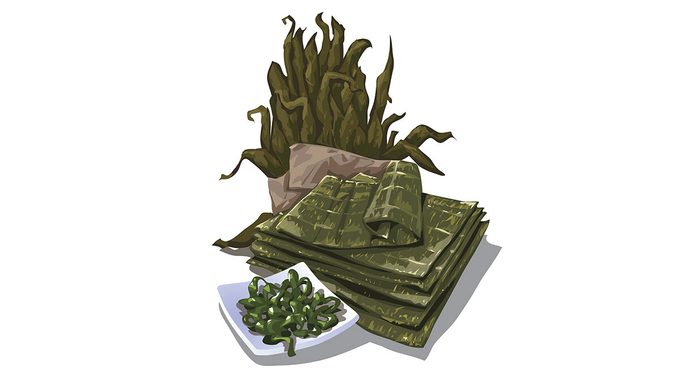The Real Reason Why You Should Eat More Seaweed
Seaweed is a vegetable that’s often overlooked as a meal option, but the nutritious benefits this plant from the sea has to offer may just change your mind.

Why seaweed may replace your love for kale
For many, seaweed just isn’t on the menu. Perhaps the only time many of us eat the healthy stuff is when we have sushi, where it’s in miso soup, wrapped around maki and tossed with a sweet vinaigrette in bright green wakame salad. But, take a look around the world, and for millions of folks – especially coastal peoples, sea vegetables are and always have been a major part of the diet.
What are the nutritional benefits of seaweed?
As dark, leafy veggies go, seaweed is about as nutrient-dense as it gets. Eat about a gram of seaweed and your daily iodine needs are taken care of. Iodine is one of those micronutrients that’s hard to come by in foods, and that’s why it’s added to “iodized” table salt to help bolster the population’s thyroid and brain health. But more and more folks are eschewing good old table salt for all those designer salts, and that’s just more reason to reach for some seaweed. (The health benefits of eating seaweed are incredible – click here for more.)
Seaweed packs super-high amounts of calcium – higher than broccoli – and in terms of protein, it’s almost as rich as legumes. There’s also a good amount of vitamins B 12 and A, and it’s a great source of fibre. But not just any old fibre. Seaweed is mostly soluble fibre, the kind that turns into a gel, slowing down the digestive process, thus inhibiting the absorption of sugars and cholesterol.
Now you might be thinking, “This all sounds great, but I haven’t got the foggiest idea what to do with it!” Fair enough. Unless you were raised in Japan or in a small, coastal, fishing village here in Canada, how would you?
For a nutrient-packed meal, try our butternut squash & kale ravioli recipe.
Want to give this ocean veggie a try? Here’s your shopping guide
First, explore the Asian markets and familiarize yourself with the different types of sea veggies on the shelves. Next, buy a selection of seaweed, bring them home and start tasting. They should taste briny, almost fishy and each will be a bit different in taste and texture, from chewy to papery. Some will be dried and require re-hydration and some will be fresh and found in the fridge or freezer. No Asian markets near you? No worries! Most grocery stores and health food shops carry nori (for homemade sushi) at the very least.
Here’s why this veggie from the sea should be the star of your skincare routine.




